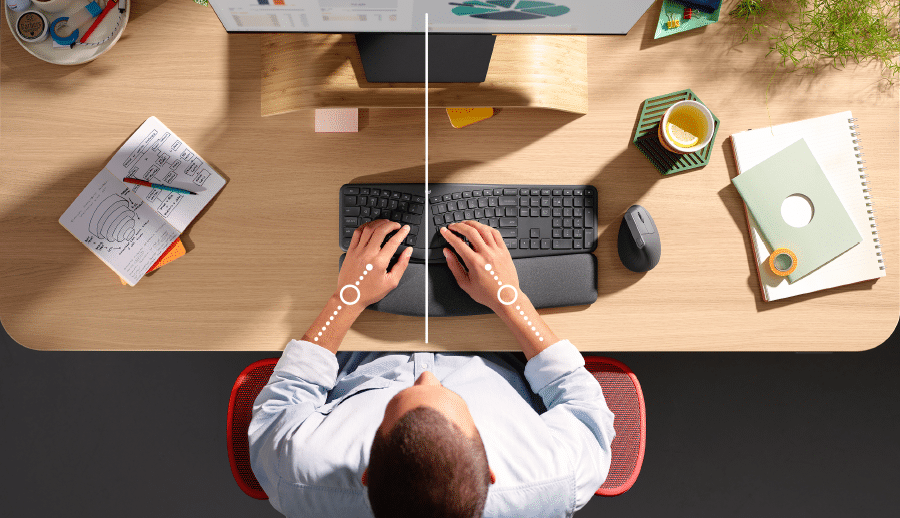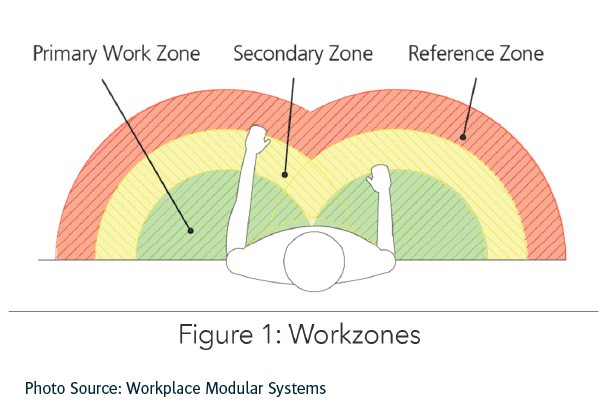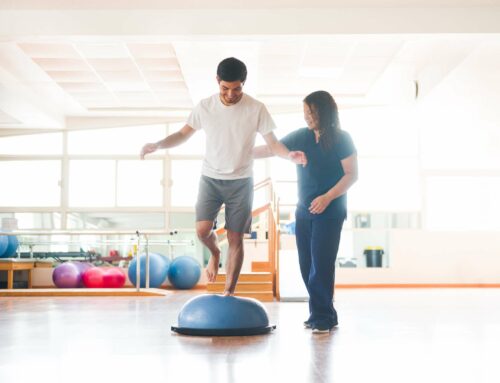Ergonomic Tips For Maximum Health Benefits
Ergonomics is the process of fitting the workplace to the specific needs of the individual worker. The overall goal is to reduce physical discomfort while also increasing efficiency and productivity.

Neutral Posture
Neutral posture means your body is aligned and balanced while either sitting or standing.
Sitting
Standing
Avoid
Work Station
Your workstation should fit your unique body type. Both an adjustable desk and chair are very important to ensure you can set your workstation to perfectly fit your needs, both at home or the office. Keep these things in mind:
Equipment
Proper placement of tools and materials at your workstation can make all the difference.

Primary Work Zone: Recurrent tasks and frequently used tools should be positioned within the “reach envelope” of your forearms (the right arm in the diagram or green area). This means you don’t need to move your upper arm in order to perform the task (i.e. area where keyboard and mouse should be placed). 60% of your day should be spent in this zone.
Secondary Work Zone: Here, everything that is used less frequently and can be reached within the envelope defined by an outstretched arm (the left arm in the diagram, shown in yellow). A computer keyboard and mouse used only occasionally may be placed in the secondary work zone. 30% of your day should be spent in this zone.
Reference Work Zone: This work zone requires additional bodily movement, which includes standing up if seated. Infrequently used items such as reference manuals or drawings can be stored here. 10% of your day should be spent in this zone.
Environment
Make sure your working environment is as optimal as possible. Poor temperature, whether that’s too hot or too cold, can increase your likelihood of stress and physical aches and pains. It can also affect your concentration as can noise, whether it’s from colleagues or your own music.
Poor lighting will strain your eyes. Make sure there isn’t a bright light coming from any angle as this can cause unnecessary strain. Make sure there is enough space between you and your co-worker to be able to utilize your desk most effectively.




